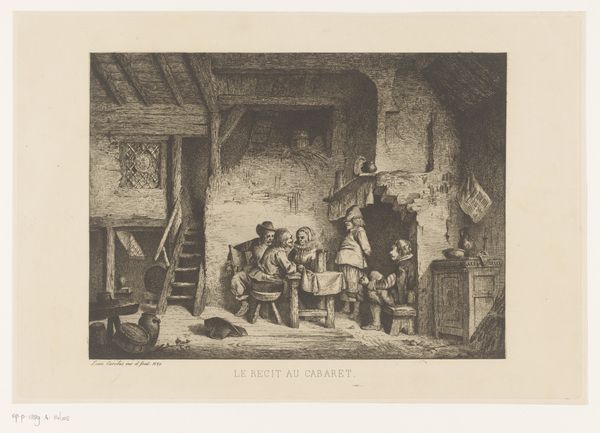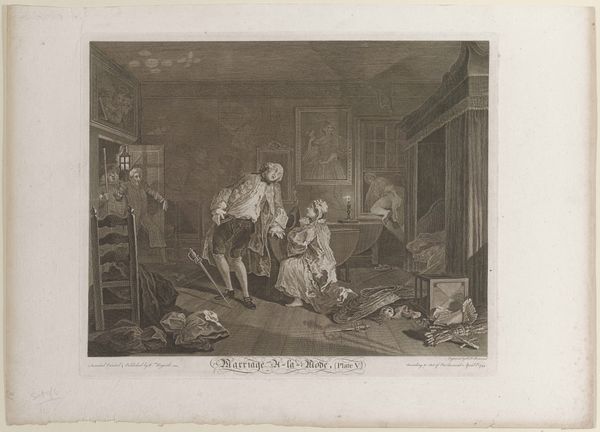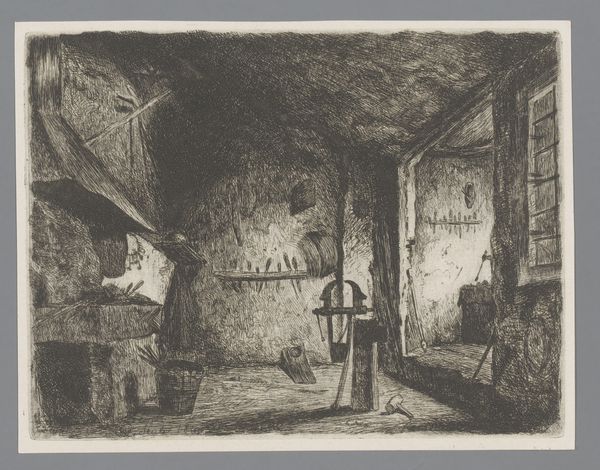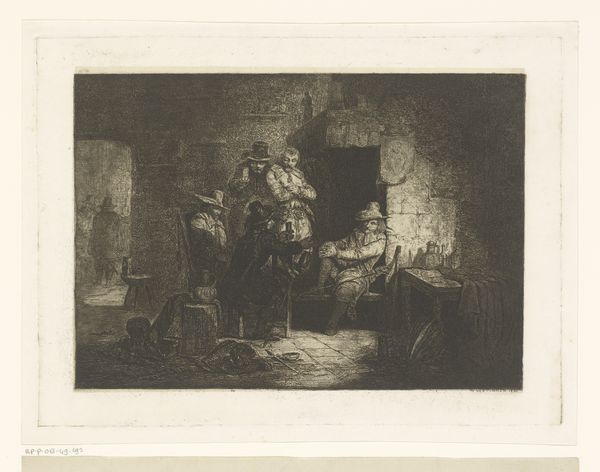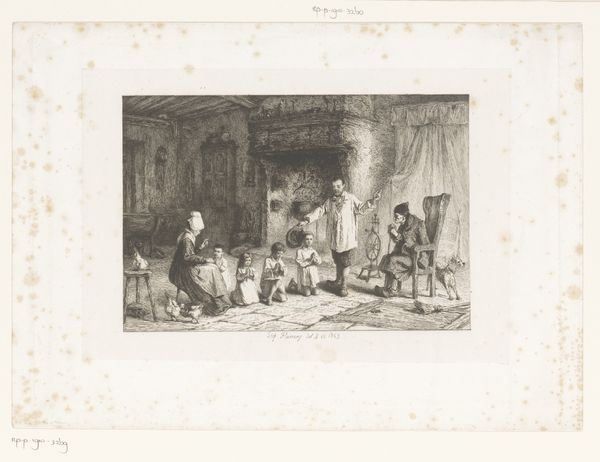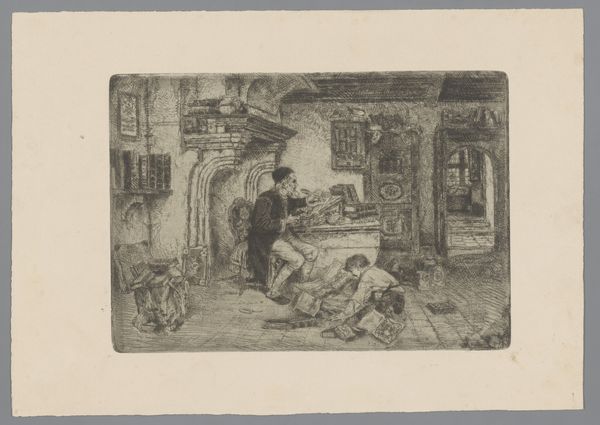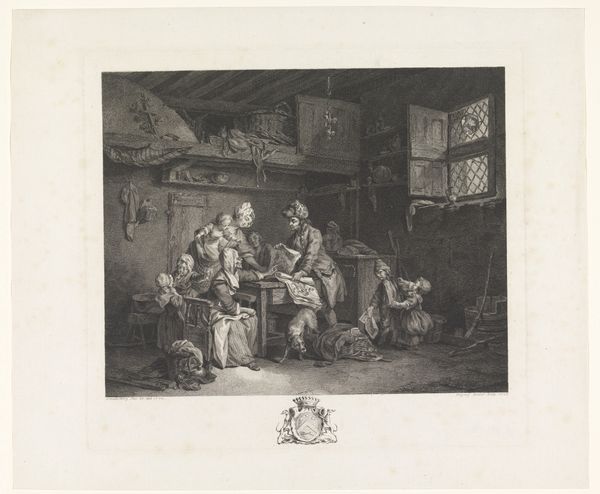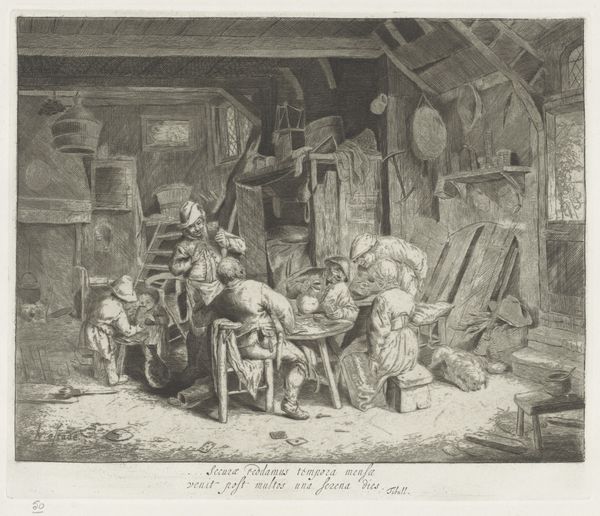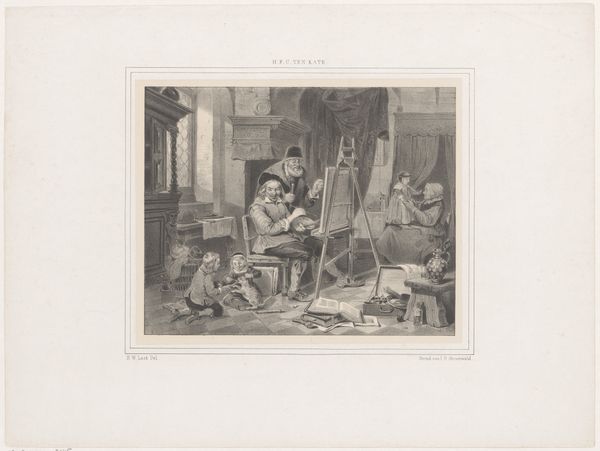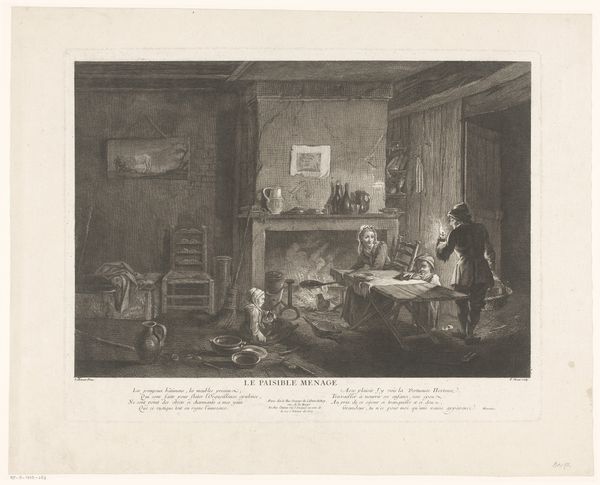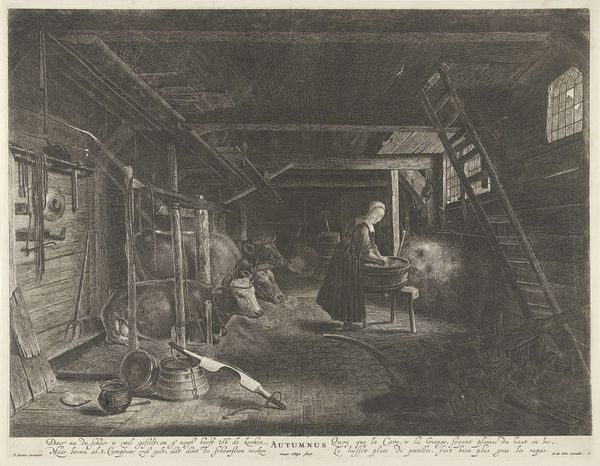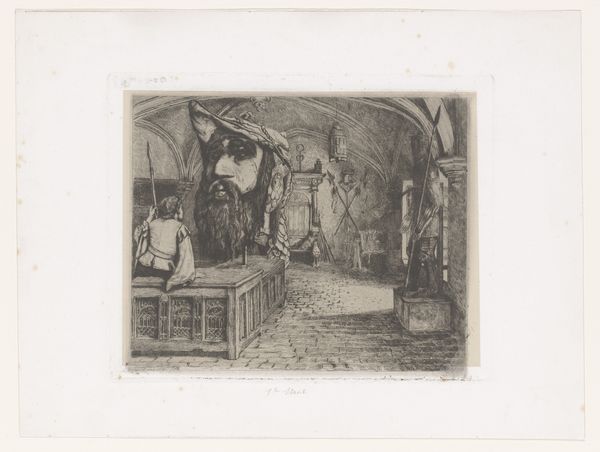
drawing, intaglio, paper, ink
#
drawing
#
intaglio
#
paper
#
ink
#
pencil drawing
#
romanticism
#
genre-painting
Dimensions: height 277 mm, width 353 mm
Copyright: Rijks Museum: Open Domain
Curator: Let’s have a look at "Company in Sixteenth-Century Clothing in a Tavern" by Louis Antoine Carolus, created in 1849. It’s a drawing, done with ink on paper, employing intaglio techniques. Editor: Immediately, I’m struck by the intimacy of this tavern scene, yet there's something slightly unsettling about it too. It almost feels voyeuristic. Curator: It is interesting how Carolus uses this genre painting, this slice of imagined 16th-century life, to speak to his 19th-century audience. Genre paintings were incredibly popular then because they offered a glimpse into everyday life. They often reflected the values, anxieties, and aspirations of the society viewing them. Editor: That hooded figure lurking in the shadows of the fireplace, though – is that meant to be ominous? The symbols seem deliberately staged to hint at something beyond just simple merrymaking. Curator: Precisely. Consider the revival of historical interest during the Romanticism movement. Carolus, by situating this scene in the 16th century, could be tapping into a nostalgic view of the past, but also perhaps commenting on the present. He might be referencing the societal upheaval occurring in Europe in 1849. Editor: It’s the details, like the leaded window and the rudimentary stairs, that add to that historic atmosphere. It could signify an established order, solid and perhaps inflexible. Whereas the central gathering is a site of social and perhaps even political exchange, maybe resistance. Curator: Possibly. These genre scenes served as both entertainment and moral instruction. While the surface presents a cozy tavern scene, the artist could subtly embed political commentary or reflections on societal morality, all viewed through the lens of historical recreation. Editor: Ultimately, what lingers with me is this careful interplay of light and shadow, highlighting both the convivial spirit and hinting at hidden narratives, the unknown character within. There is an enduring fascination with such clandestine gatherings, regardless of the century it comes from. Curator: It reveals how we project contemporary concerns onto historical settings to better understand the present moment.
Comments
No comments
Be the first to comment and join the conversation on the ultimate creative platform.

